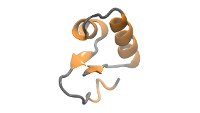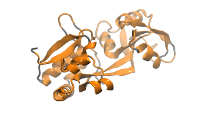The HECBioSim benchmark suite consists of a set of simple benchmarks for a number of popular Molecular Dynamics (MD) engines, each of which is set at a different atom count. Our benchmarking suite has now been also has an automated tool (hpcbench) for running and analysing the data, this allows us to quickly benchmark new code versions or to benchmark HPC machines that we have not previously done this for.
Having such a benchmarking suite enables us to provide guidelines about run-times that members of our community can expect when applying for time on HPC facilities and allows us to assess such applications at a technical level when supporting an application on given hardware available to us.
The Benchmark Systems
The benchmark suite currently contains benchmarks for the AMBER, GROMACS, LAMMPS, NAMD and OpenMM molecular dynamics packages. The following systems have currently been setup for each of the MD packages to represent examples of the sorts of simulations that biosimulation scientists would do in production. Currently we only have benchmarks for classical MD.
20K atom system - 3NIR Crambin
Total number of atoms = 19,605
Protein atoms = 642 Water atoms = 18,963
61K atom system - 1WDN Glutamine-Binding Protein
Total number of atoms = 61,153
Protein atoms = 3,555 Water atoms = 57,957 Ions = 1
465K atom system - hEGFR Dimer of 1IVO and 1NQL
Total number of atoms = 465,399
Protein atoms = 21,749 Lipid atoms = 134,268 Water atoms = 309,087 Ions = 295
1.4M atom system - A Pair of hEGFR Dimers of 1IVO and 1NQL
Total number of atoms = 1,403,182
Protein atoms = 43,498 Lipid atoms = 235,304 Water atoms = 1,123,392 Ions = 986
3M atom system - A Pair of hEGFR tetramers of 1IVO and 1NQL
Total number of atoms = 2,997,924
Protein atoms = 86,996 Lipid atoms = 867,784 Water atoms = 2,041,230 Ions = 1,914
How to obtain
Our benchmarks suite is split over two repositories.
Our raw benchmark input files can be found here
Our automation tools for running and analysing them can be found here.





